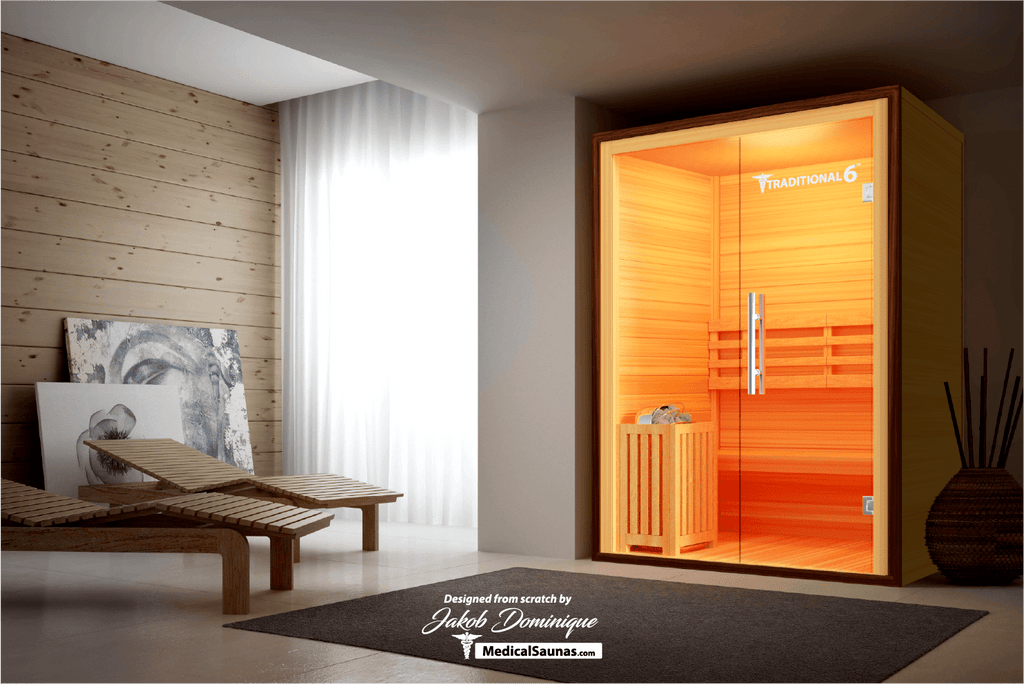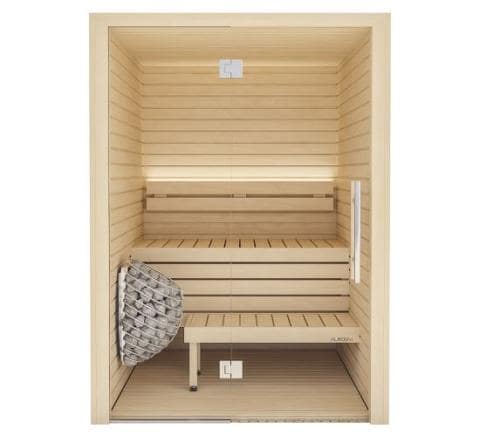Everything about Traditional Sauna
Everything about Traditional Sauna
Blog Article
Top Guidelines Of Traditional Sauna
Table of ContentsTraditional Sauna Things To Know Before You BuyFacts About Traditional Sauna UncoveredSee This Report about Traditional SaunaWhat Does Traditional Sauna Do?Traditional Sauna Fundamentals Explained
Energy savings is one point to think about for people who prepare on using their sauna frequently. For a typical sauna, bathers normally require to await 30-40 mins for the room to pre-heat before getting in. Infrared saunas, on the various other hand, typically reach their ideal temperature in around 15 mins.That indicates that in an infrared sauna, bathers can start appreciating their sauna instantly. One distinction between the two kinds of sauna that is frequently neglected is the social experience.
Think about how numerous people will certainly be utilizing the sauna before making your choice. Adding a sauna to your home can be one of the most interesting and gratifying decisions you'll ever before make. Regular sauna use will improve your flow, maintain much healthier skin, support kidney feature, lower blood stress, enhance mind feature, and a lot a lot more
Attempt a sauna today and uncover several of the amazing benefits for yourself!.
Not known Details About Traditional Sauna
Infrared and conventional dry saunas are both popular choices for those seeking leisure and therapeutic benefits. Nonetheless, there are some vital distinctions in between the 2 sorts of saunas that must be considered before choosing. Traditional Sauna. Traditional dry saunas use heated rocks to produce heavy steam, while infrared saunas utilize infrared heaters to straight heat up the body
Aspects such as heat resistance, preferred level of detoxing, and general wellness must be thought about when deciding which kind of sauna to utilize. Infrared saunas are a kind of sauna that make use of infrared light to heat up the body directly, instead than heating up the air around the body like standard saunas.
The temperature level in an infrared sauna is generally reduced than in a standard sauna, with temperatures ranging from 120F to 150F. Infrared saunas supply a series of advantages that make them an appealing alternative for those seeking to improve their wellness and wellness. Some of the benefits of infrared saunas include: Infrared saunas utilize lower temperature levels than traditional saunas, which can make them a lot more comfortable for those that locate high temperature levels difficult to endure.

Infrared saunas have actually been shown to aid the body eliminate contaminants through sweating. Sweating can also assist to improve skin wellness by getting rid of contaminations and dead skin cells.
5 Easy Facts About Traditional Sauna Explained

With their reduced temperatures, deep penetration, and variety of health benefits, infrared saunas next are a wonderful means to kick back, relax, and enhance your total health and wellness. Traditional dry saunas have actually been around for centuries and are still prominent today. They are generally heated up with wood, gas, or electrical energy and have low humidity degrees.
There are several benefits to making use of a typical dry sauna. Right here are a couple of: Relaxation: The high temperature level and low humidity in typical dry saunas can assist kick back the muscles and lower tension degrees. Detoxing: Sweating in a sauna can help get rid of toxins from the body, which can boost general health.
Some Of Traditional Sauna
When it comes to saunas, there are two main sorts of heating approaches: traditional and infrared. Typical saunas make use of heated air to heat the body, while infrared saunas utilize infrared radiation to penetrate the skin and warmth the body from within. One of the main differences between both approaches is the sort of heat they create.
Because infrared radiation passes through the skin extra deeply, it can generate a comparable sweat reaction at lower temperatures. An additional distinction is the method the warm is dispersed. Traditional saunas warm the air, which after that heats up the body with convection. Infrared saunas, on the other hand, warmth the body straight with radiation.
In regards to power performance, infrared saunas are generally a lot more effective than conventional saunas due to the fact that they require less power to run. They likewise heat up faster, so they can be used for much shorter sessions. When it concerns the results on the body, both kinds of saunas have been revealed to have benefits.

Some Known Questions About Traditional Sauna.
Both sorts of saunas use unique advantages and drawbacks that need to be thought about before deciding. The click this site choice in between an infrared check sauna and a traditional dry sauna mostly depends upon personal preference and the wanted advantages. Those who choose a more comfortable, reduced temperature atmosphere might choose an infrared sauna, while those who are seeking intense heat and a traditional sauna experience might like a standard completely dry sauna.

Report this page